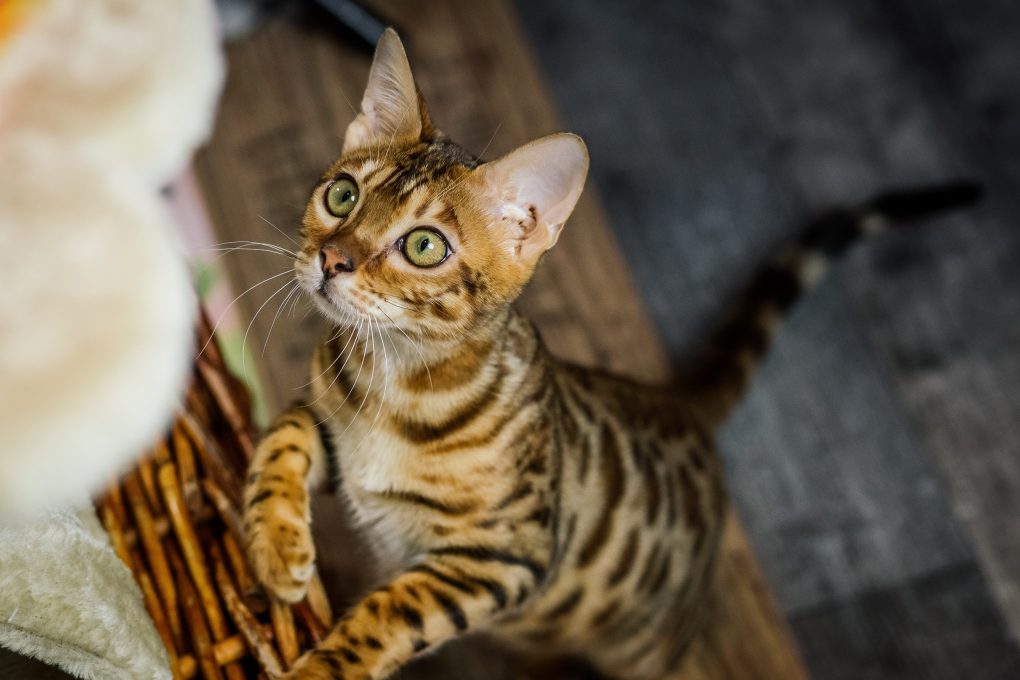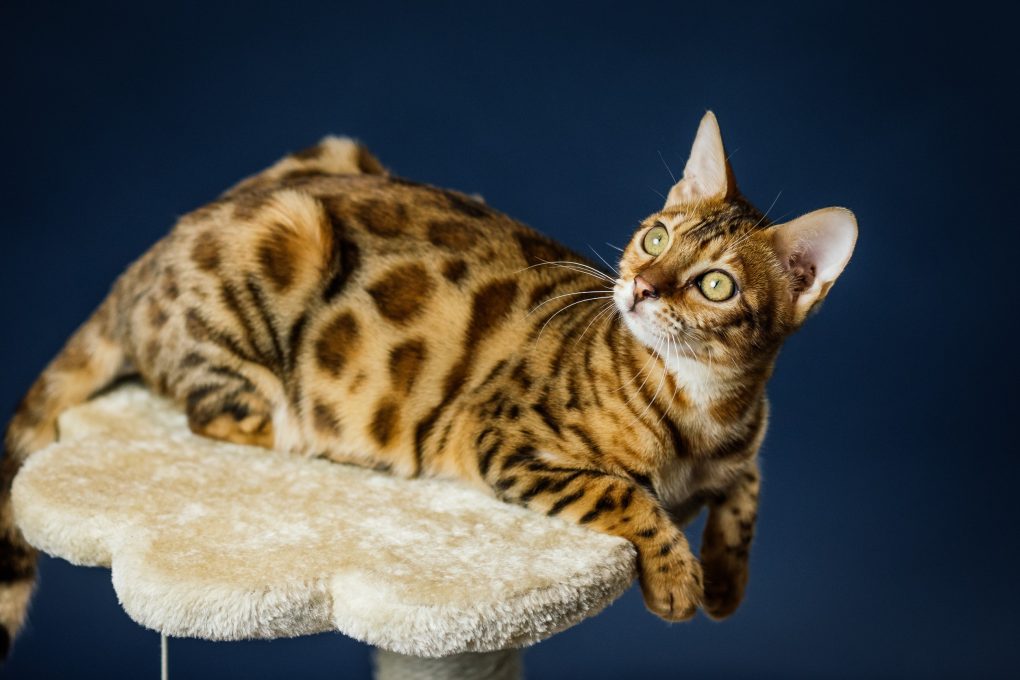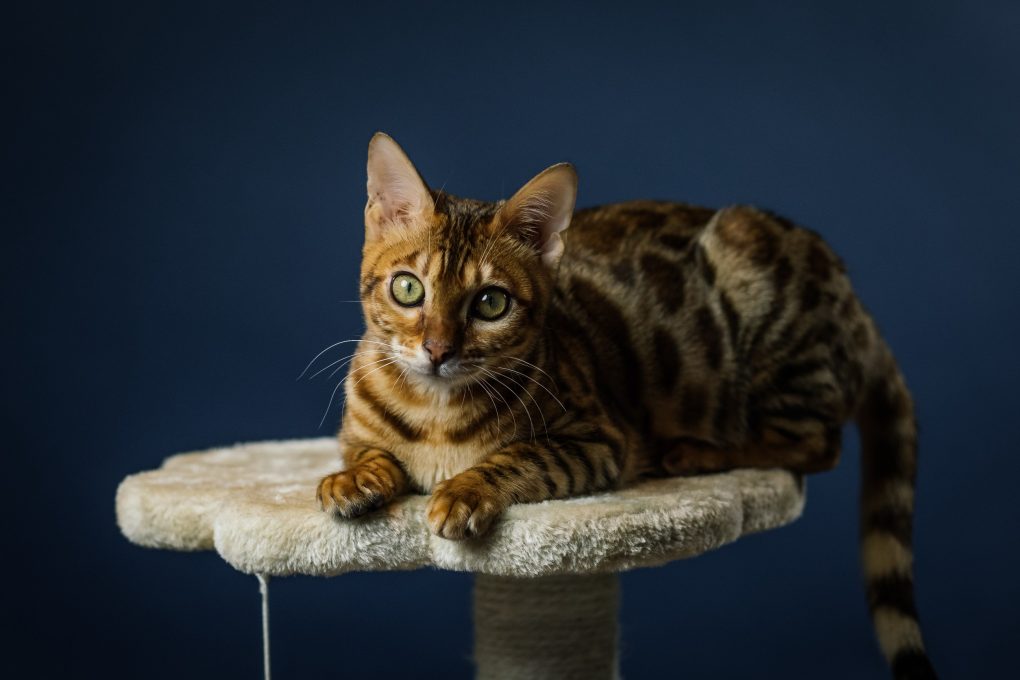Do Bengal Cats Calm Down With Age: Understanding and Dealing With Bengal Cats Behaviors
Some Bengals may calm down with age, but this can vary depending on the individual cat. Some cats may become more relaxed and less active as they age, while others may remain just as energetic and playful as they were when they were younger. Therefore, it is vital to provide Bengal cats with plenty of opportunities for exercise and play to keep them physically and mentally stimulated.
Table of Contents
Stages of Kitten Development
When a kitten is born, it’s constantly active and playful. As they grow, they become more sedentary and begin to explore their surroundings. This is when kittens reach their adult behavior around 6 to 8 weeks of age. By 12 to 16 weeks, kittens have reached full maturity and can calm down. However, behavioral changes or health problems may occur throughout kittenhood.


Neonatal Stage
The neonatal period is the first 28 days of a newborn’s life. It is a time of rapid adaptation for infants as they transition from the intrauterine environment to the extrauterine environment. During this stage, the newborn’s primary focus is on survival and growth, including the establishment of respiration, thermoregulation, digestion, and immune function.
During the neonatal stage, kittens are born with a strong sense of smell and taste. Their eyes and ears are still closed, and they cannot regulate their body temperature. Kittens in this stage are very vulnerable to injury.
Transition Stage
The transition stage for kittens is when they are weaned and reach sexual maturity. This typically occurs between the ages of 4 and 8 weeks. During this stage, kittens are learning to eat solid food, developing their motor skills, and beginning to interact with their environment and other cats. They will also begin to be vaccinated at this stage.
Kittens need proper nutrition, socialization, and veterinary care during this stage to ensure healthy growth and development. It’s also an excellent time to start litter training.
Also, kittens in the transition stage may be vocal, making high-pitched noises that can be tough to understand. This vocal behavior is used to express their feelings and find their way around. As they grow and mature, kittens become more independent and less vocal in their behavior, making it easier to identify them in the wild.
Socialization Stage
The socialization stage for kittens is between birth and around 12-14 weeks when kittens are most receptive to learning about and becoming accustomed to new people, animals, and environments. This is a crucial stage for kittens because it shapes their behavior and personality as they grow into adult cats.
During this stage, kittens learn about their place in the world and develop relationships with people and pets. Kittens who are not socialized early in life may become shy or aggressive later. If your cat is not well-socialized, it can cause problems in its daily life.
Cats who are not well-socialized may be more likely to be aggressive or show behavior issues, such as littering or biting. It’s essential to provide your kitten with plenty of socialization during this stage of development to help it learn about the world and build relationships. This will help it be a happy cat throughout its life.
Juvenile
The juvenile stage for kittens is the period after socialization and sexual maturity, usually between 3-6 months. During this stage, kittens continue to grow and develop both physically and mentally. Cats are typically more relaxed and content with their lives than younger cats.
Old age is when a cat reaches its end stage and may experience health problems. These cats may become less active or lose some of their energy and vitality. Understanding the various stages of kitten development can help cat owners keep track of their cat’s growth and its changing personality over time.
Puberty
During puberty, a Bengal cat’s body and brain are growing rapidly, which can cause some behavioral changes in the cat. As the cat undergoes physical and mental changes, it may be more active, curious, and energetic. Sometimes, this behavior can become destructive or even dangerous for the cat.
Puberty is usually complete by around 8 to 12 months of age. At this point, a Bengal cat will have reached its adult size and will no longer be growing, but cats often go through distinct stages of growth throughout their lives.
Adulthood
As a Bengal cat age, it will reach adulthood and enter its sixth stage of development. During this stage, the cat will become more independent and self-reliant. It will start to explore its surroundings more and become more active. At this point in a cat’s life, it is fully prepared to be on its own.
As cats age, they lose their physical abilities, such as running and jumping, but they remain vital and playful creatures who are always ready to bond with their owners.
Factors Affecting a Cat’s Hyperactivity Levels
Age


Confirming with PAWS Chicago, their activity levels may decrease as cats age. This is because cats reach their adult developmental stage around six months. As they get older, cats may become more mellow and less active. But there are some exceptions to this rule – some cats may continue to be hyperactive as they age.
Teething
As cats age, their hyperactivity levels may increase. This is often a result of various factors, including changes in diet, growth, and dental health. Teething can also be a cause of a cat’s increased activity level. For example, if you’re trying to calm down a hyperactive cat, you may need to take different measures depending on the cause of its hyperactivity.
For example, if your cat is constantly scratching and biting themselves or you, try providing them with toys and treats to play with. Or, if they are constantly meowing and thrashing around, try playing with them or cuddling them to calm them down.
Hormonal Changes During Breeding Seasons
Hormonal changes during breeding seasons can affect cat behavior. During these times, cats may become more active as they prepare to breed or during pregnancy and lactation.
Cat owners should monitor their cat’s activity levels and adjust their schedules to keep them calm and content. By monitoring the cats’ activity and making minor changes to their routine, cat owners can help reduce the intensity of a cat’s hyperactivity during the breeding season.
Underlying Medical Condition
Several factors can affect a cat’s hyperactivity levels, including underlying medical conditions. For example, certain medical conditions, such as feline hyperesthesia syndrome (FH), polycystic kidney disease (PKD), and cytoplasmic mitochondrial disorders (MCDs), can cause hyperactivity in cats.
When diagnosing underlying medical problems, it is essential to treat the cause of hyperactivity and improve the cat’s quality of life. For example, if you notice that your cat is acting excessively fearful or aggressively or constantly playing, it may be indicative of an underlying medical condition.
Regular veterinary checkups can help identify problems early and ensure that your cat receives the treatment it needs. By addressing the cause of hyperactivity, you can help reduce the stress and anxiety in your cat and make it more comfortable around people and pets in the long term.
Tips to Calm Down a Hyper Cat


Tire the Cat Down
It’s vital to tire the cat down by providing it with plenty of toys and playtime. Cats are naturally playful and need stimulation to stay mentally and physically active. In addition to playing with toys, cats also enjoy using kites or balls.
To keep your cat calm and comfortable, it’s best to play with it using a variety of toys. It will help the cat learn which toys are its favorites and which ones it would prefer playing with.
Enrich Cat’s Environment
Enriching the cat’s environment can help reduce stress and improve the quality of life for cats. By providing your cat with stimulation and opportunities to play, you can help them adjust to changes in their lives, such as moving or transitioning from one owner to another.
Train and Socialize
Training and socializing cats early is crucial to help ease the transition. For example, offer toys, play with the cat, and expose it to different people and environments to reduce your cat’s anxiety. In addition, you may need to seek veterinary care if your cat becomes excessively aggressive or destructive.
However, there are ways to help reduce behavior and anxiety in older cats. By offering plenty of toys and playing with them, for example, you can help reduce your cat’s hyperactivity.
Give Your Cat Something to Bite
Cats are known for their behavior of biting to regulate their behavior. Biting can be a cat’s way of expressing emotions and showing displeasure with the surroundings. Cats bite in different ways, including quick bites or full-out attacks. When cats bite, they use their teeth to quickly grip their prey before releasing it. Their bite is so powerful that it can often break the prey’s spine or bones.
However, cats do not always bite prey this way – sometimes, they will merely pounce on it from a high place or hover over it before attacking. They use biting to communicate with other cats and mark their territory regardless of how cats bite prey. If your cat is hyperactive and biting everything in sight, giving them something to bite can help them calm down.
Spay and Neuter Your Cats
Spaying and neutering your cat can help regulate their behavior and reduce the number of litters. It’s also essential to keep your cat indoors during the day and provide plenty of toys and playtime. When cats are indoors, it’s best to keep them in only indoor areas such as inside cat pens or catios. This will help keep them safe from predators and cat-napping friends.
However, cats that are spayed or neutered before they reach sexual maturity are less likely to get pregnant or breed. So if you have cats that like to roam around, spaying or neutering them is essential to their health and well-being.
Use Natural Herbs
You can use many different herbs to calm a cat, and it’s essential to find one that is effective and safe for your cat.
Some of the most common herbs to calm cats include lavender, hops, valerian root, and chamomile. These herbs have been shown to calm cats effectively and can be easily found in most homes. They are safe for cats if appropriately used, so it is essential to research before selecting an herbal formula for your cat.
Use Feline Pheromones
Bengal cats are one of the most popular cat breeds in the world, but they can become destructive and unruly as they age. One way to help with this problem is to use feline pheromones to calm your cat down. Cats secrete these natural compounds to communicate with other cats, and they work by reducing your cat’s overall stress levels.
Using feline pheromones to calm your cat down can help reduce its destructive behavior and make it more comfortable in the long run. Bengal cats are a loving and special breed that deserves our care and affection, so why not use some simple techniques to help them feel comfortable and relaxed in their older age?
